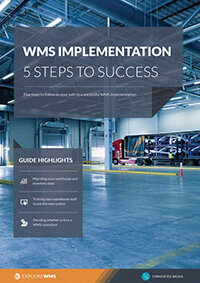The benefits of WMS for international companies
An international supply chain is nothing if it isn’t complex. Unfortunately, it can get costly too.
That pushes many companies to look for new software to help control costs and ease burdens, and the WMS is a smart place to start, especially for global supply chains that are moving goods across the world.
There are many software options designed specifically for international operations, helping you decide where to keep materials, set up your distribution centers, and much more. Larger systems go beyond a single location’s floor plan tools and can help you find partners to source goods from for multiple countries as well as in local markets, laying out your entire model.
You’ll get a better understanding of your inventory and see how to move it to fill orders or reduce costs, which can simplify practices such as just-in-time inventory. And that’s just the start.
Let’s look at a few bigger-picture elements where you’ll benefit from a WMS international supply chain management package.
Easing integrations with other software
A WMS that focuses on international supply chain management prioritizes integration capabilities with other systems, such as your ERP and TMS. Best practices have them built with EDIs that simplify data sharing and enhance its usability. For international companies, this means your WMS is part of a technology stack that delivers all the operational, sales, and compliance data your business needs.
You’re building visibility with each new connection.
A focus on integration will help you use any required software or formats for each region, giving you the flexibility to expand in the E.U. while protecting consumer data or meeting local laws. Or, you might get a heads up about expanding into Singapore where chewing gum cannot be imported unless it meets specific therapeutic or dental needs.
Boosting billing and document processing
Top WMS international supply chain management tools are designed to minimize this complexity to increase operational efficiency and cut costs. One chief way they do this is by supporting billing management and document tracking, attaching a full record of warehouse activity and data like temperature or cold storage to each product. They also help you localize efforts, making it easier to manage multiple currencies and languages.
Billing management tools take advantage of the integration we mentioned to help your business not only bill and get paid by customers but also understand the total cost of each product in each market. A WMS can show you activity-based billing metrics, where you see all activities related to suppliers, exchanges, or other categories.
An international 3PL can use this feature to determine how much to bill, while traditional companies can use these dashboards to understand better and compare costs.
Addressing fragmented infrastructure
Global infrastructure is changing dramatically.
India and China, for instance, are enhancing roads and railways as well as other transport services through a variety of public-private partnerships. We already see this lead to a rapid expansion of logistics partners and options, making it difficult for any company to stay informed of what’s available.
Securing a WMS with international supply chain management tools can help future-proof your efforts in growing regions like Asia-Pacific. WMS’s ability to work with multiple data vendors and partners make it a useful tool to find the right warehouses, distribution centers, 3PLs, and other partners you need to keep your international operations running smoothly.
Free white paper

WMS implementation guide
Plan your WMS implementation successfully with this comprehensive guide

Related articles
-

What are the biggest WMS challenges in warehouse management?
The top problems warehouses face and how WMS helps them
-

Mission-critical features of food lot traceability software
What features of food traceability software will help you during a food recall
-

The benefits of a warehouse inventory system
The benefits WMS provides inventory management in the warehouse

